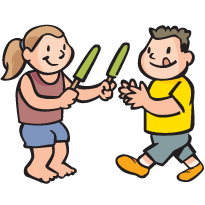Boston Children's Museum
308 Congress Street, Boston, MA 02210
617-426-6500
© Boston Children’s Museum 2025
Website Design by JackrabbitCooking activities are great for teaching kids how to use measurement tools, giving them a chance to apply math skills like counting, adding, multiplying, etc. In addition, when you give them a chance to design their own recipe, kids have to rely on estimation, problem solving and other science, math and engineering skills. And this activity gives you a chance to talk to them about making healthy choices in what they eat.
Prepare all of the ingredients, making sure that they are all the same temperature.

Go over your list of “Fast Freezers”, “Slow Freezers”, and “No Freezers” from the Popsicle Science activity. Did any ingredients taste different frozen than they did unfrozen? Did any teams decide what flavor popsicle they might make?
Try to make a popsicle that tastes better than what you can buy in the store.
After placing the ice cube trays in the freezer, gather your students together to talk about what they tried. What flavors did they use? Did they mix any flavors? Did they use any sweetners? If so, how much did they use?
As they wait for their creations to freeze, have each team decide on a name for their new popsicle, and ask them to create either a print advertisement or a commercial that they can act out for their new product. They can choose their popsicle’s name by thinking about a few questions, like “What is unique about their recipe?” and “Do the flavors they’ve chosen remind them of anything?”
When the popsicles are all frozen, take them out and place the trays next to the print advertisement, or before removing them from the freezer have each team act out their commercial—then it’s time to share. Depending on the size of your group and the size of ice cube trays you have, there might not be enough popsicles for every child to try every kind. If this is the case, ask your students to choose three of the other popsicles that they would like to sample—and make sure they don’t forget to try their own as well!